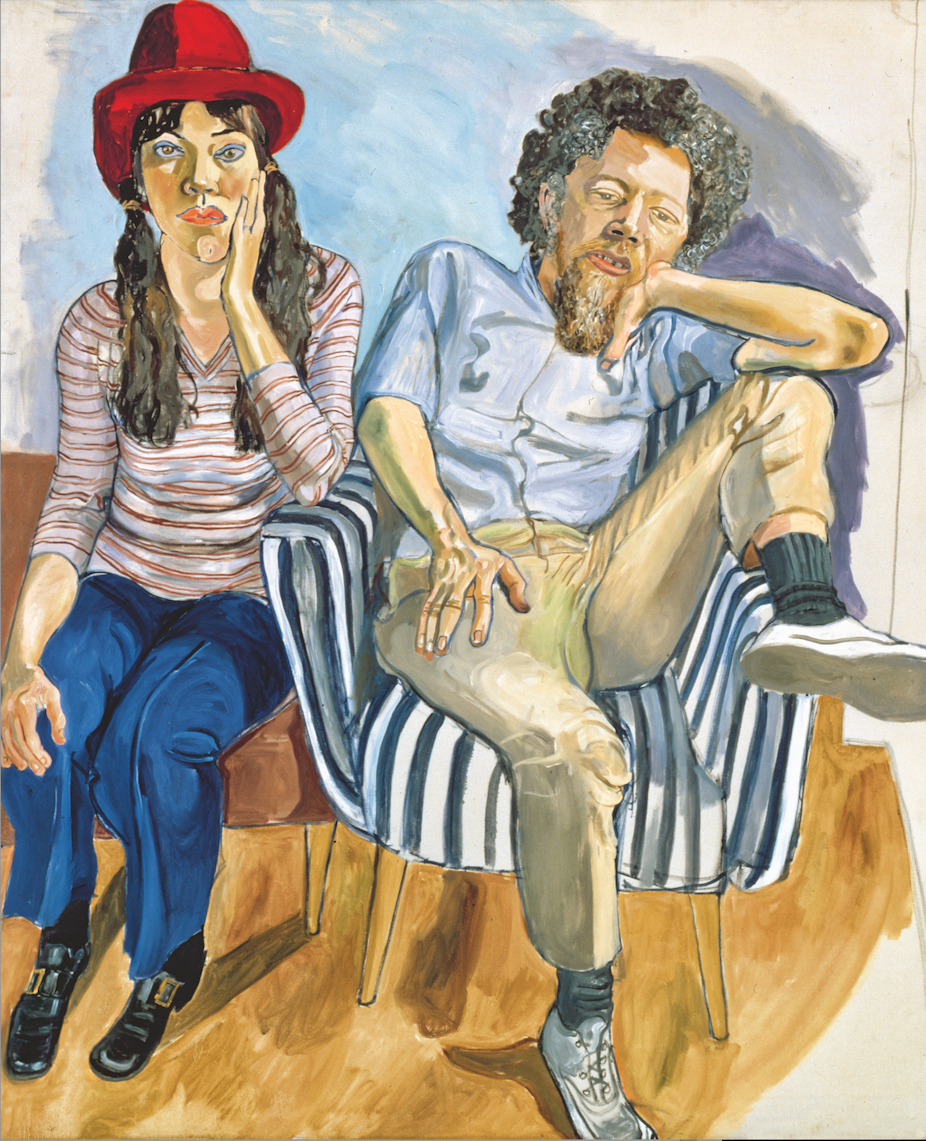In 1971, the art critic Linda Nochlin transformed the art history debate by asking: “Why have there been no great women artists?”, a question with profound implications for rethinking the gendered operations of criticism, curation, history and the art market, which conspired to define “greatness”. The notion remains a problem.
In London, a portrait of Nochlin and her daughter Daisy hangs in the Barbican Art Gallery exhibition Alice Neel: Hot Off the Griddle. In the last decade or so, the status of Neel has risen from relative obscurity as an outlier in modern art to the extent that a critical consensus of greatness frames her career, almost 40 years after her death.
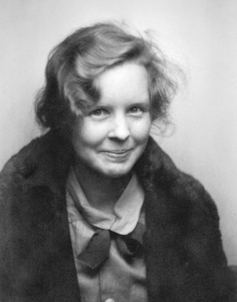
The common theme of celebrations of Neel’s greatness is her empathetic but unyielding scrutiny of family, friends and neighbours within a radically diverse community. From the late 1920s until her death in 1984, Neel’s attention to the sentient, sensuous human subject – irrespective but mindful of race, gender, status and sexuality – was rare and undervalued, yet now seems prophetic.
A male art world
Situated in a large room titled Human Creatures, the Nochlins are part of a neighbourhood emphatically inclusive with artists, activists and everyday New Yorkers brought together by Neel’s way of seeing. With slightly exaggerated facial features and bendy limbs, the sitters confront the viewer with large-eyed, steady gazes, in spare tight arrangements rendered in bright, almost jarring colours. Whether clothed or nude, the people in these paintings are conveyed with such verve, clarity and intelligence that the term “great artist” does seem fitting.
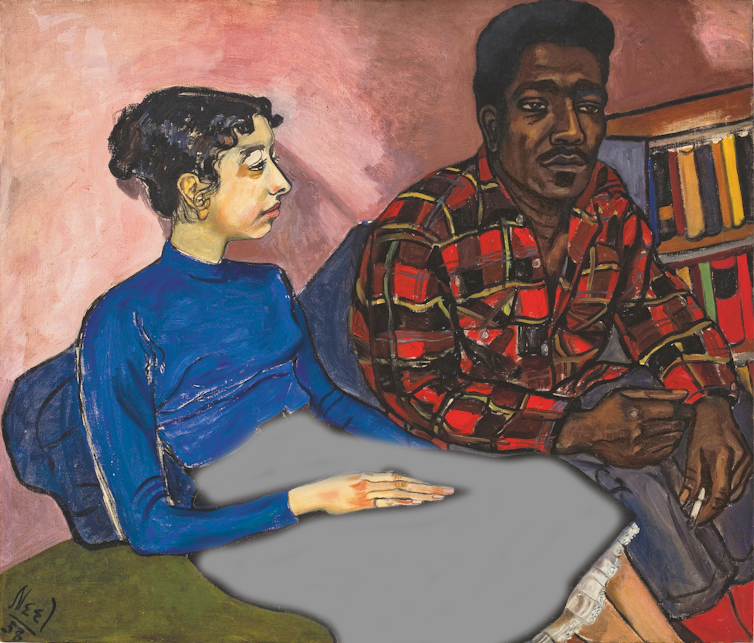
However, Nochlin exposed the category of “great artist” as a trap. Was Neel simply a great artist or representative of that loaded subcategory “great woman artist”? Neel herself asserted:
I have always wanted to paint as a woman, but not as the oppressive and power-mad world thought a woman should paint.
Neel’s gender was crucial for her painting and politics, but she resented the cliches about female artists that dominated art criticism. For instance, the mythologies of Georgia O’Keeffe and Frida Kahlo rest respectively on eroticised sensuality and emotional intensity. Their addition to the canon exposes a rigged game because the key terms for defining women are so reduced. The same applies to Black artists, and doubly so with Black female artists, far removed from the predominating narrative of white male artists.

If Neel’s works chimed less in her own time, this is because throughout her career she was both marginal and unfashionable as a politically radical figurative female artist, especially in the post-war heyday of abstract expressionism, which was very much a male domain. This style of “action painting” – the spontaneous throwing, splashing or smearing of paint across a canvas – reinforced the idea of the masculine epic portraying intense soul-searching.
Jackson Pollock and his contemporaries became the usual suspects of most subsequent accounts, exhibitions and collections, and the story of modern art simply grafted these personalities and styles onto the old one, which remained otherwise intact.
Art without men
Not far from the Neel show, the Whitechapel Art Gallery is hosting Action, Gesture, Paint: Women Artists and Global Abstraction 1940–70, an overdue reframing of the classic narrative of abstract expressionism.
This not only foregrounds the forgotten women of abstract art but also extends beyond the US and Europe. As an art historian who was trained by pioneering feminist scholars, it was both humbling and revealing to confront so many astonishing works by mostly unfamiliar artists.
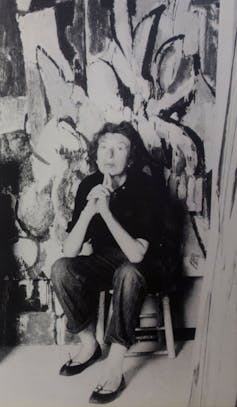
If the most famous painters on display are Lee Krasner and Helen Frankenthaler, these two women have long endured playing second fiddle to the men of abstract expressionism. Without an identifying caption would a viewer deem the Spanish painter Juana Francés’s dark and weighty abstractions more feminine than better-known male counterparts? At any rate, without this exhibition, most of the artists would remain pretty much unknown.
For Katy Hessel, telling The Story of Art Without Men is the only sure way of shifting the terms of greatness, as inscribed in Ernst Gombrich’s gender-blind The Story of Art. As cultural commentator Edwina Preston points out in an excellent review of Hessel’s book, the author’s concentration on modern art is unavoidable due to the increased numbers of female artists.
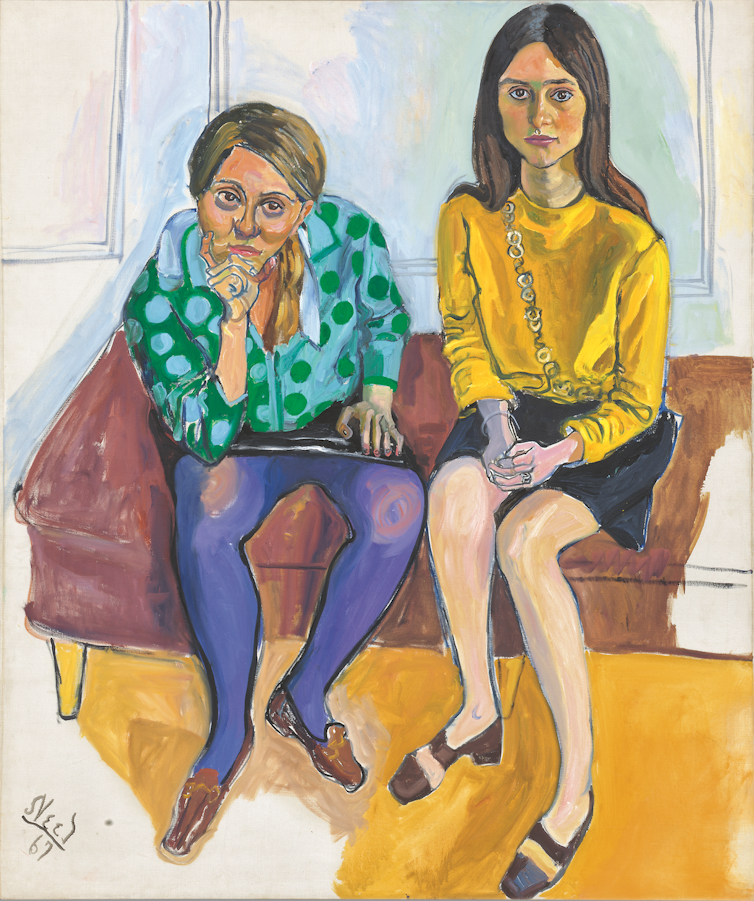
Women had better access to educational and employment opportunities from the early 20th century, such as the Philadelphia School of Design for Women where Neel studied. This training was liberating in enabling women’s creative work, but modern art criticism often presented the applied arts – crafts and commercial art – as secondary. Fine art, not coincidentally, was the province of male genius.
Do we really need greatness? Try to imagine culture without evaluation – it’s an unlikely scenario. The art market demands it. Male artists command the highest prices, with the exception of O’Keeffe, whose 1944 Jimson Weed/White Flower No. 1 sold for US$44 million.
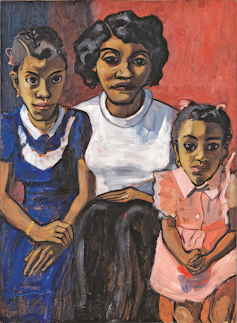
The market is now catching up with Alice Neel, with sales now moving up the millions – a long way from the average price of US$60,000 (£48,000) in the 1990s.
But the value of Neel’s work for most viewers is not economic. It lies in the pleasurable and poignant experience of looking at her deeply human and starkly beautiful portraits.
The continued need for rethinking greatness is more a matter of alert and responsive gatekeeping against reproducing the same old biases. We needn’t jettison the idea, but we could take Neel’s case as an impetus to look beyond the timeworn tales of the male heroes of modern art.

